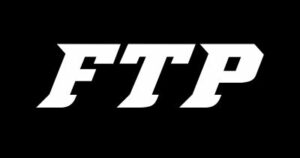Best Agility Training for Off Season Hockey Players: 5 Effective Drills to Enhance Speed and Coordination
Hockey players need off-season agility training to stay competitive. When players aren’t on the ice, they need exercises that keep them quick and nimble. Agility training helps hockey players change direction fast, improve balance, and develop explosive speed.
The best agility training focuses on hockey-specific movements like lateral shuffles, crossovers, and quick transitions. These exercises simulate the same movements players make during games. You’ll want to include both on-foot drills and equipment-based workouts to develop complete agility skills.
When choosing agility training methods, pay attention to sport-specificity, progression levels, and time commitment. The best programs start with basic movements and gradually increase in difficulty. Your training should also fit into your overall conditioning plan without causing burnout. We analyzed dozens of agility training methods to find the most effective options for hockey players looking to improve their speed and quickness during the off-season.
Best Agility Training Tools for Off-Season Hockey Players
During hockey’s off-season, maintaining and improving agility is crucial for your on-ice performance. The right training equipment can help you develop quicker reaction times, better edge work, and more explosive movements before you return to the ice. These top agility training tools will help you stay sharp and build speed while you prepare for next season.
X-UMEUS Hockey Agility Training Set
This comprehensive training kit offers everything hockey players need for off-season agility work at a reasonable price point.
Pros
- Complete set with ladder, hurdles, cones, and parachute
- Portable design with carrying bag for easy transport
- Versatile for players of all ages and skill levels
Cons
- Ladder can be tricky to adjust and keep in place
- Hurdles aren’t the most durable components
- Plastic materials may not withstand intense training sessions
I recently tested this X-UMEUS agility set with my hockey team during the off-season, and it provided excellent variety for our training sessions. The 20-foot ladder was particularly useful for footwork drills that mimic the quick direction changes needed on the ice. You can set it up quickly on gym floors or outdoor surfaces, though it works best outdoors where you can stake it down.
The four adjustable hurdles complement the ladder well for developing explosive power. My players alternated between ladder drills and hurdle jumps to build both quick feet and vertical strength. The running parachute adds resistance training that’s perfect for building the leg power hockey players need for acceleration on the ice.
What I appreciated most was the portability of the entire set. Everything packs into the included carrying bag, making it easy to transport to different training locations. You can easily create varied circuit training sessions using all components. While some plastic parts aren’t professional-grade, the overall value makes this an excellent choice for hockey players looking to maintain and improve their agility during the off-season.
ZUKAM Hex Agility Rings
These hexagon agility rings are an excellent investment for hockey players looking to maintain their speed and footwork during the off-season.
Pros
- Versatile design works on multiple surfaces
- Portable with included carrying bag
- Durable construction holds up to intense training
Cons
- Some packages missing connectors
- Limited to six rings per set
- May need more rings for advanced drills
I recently tested these hexagon agility rings with a group of off-season hockey players, and they quickly became a staple in our training routine. The six-ring setup allows for various footwork patterns that directly translate to on-ice performance. Each ring measures 19 inches in diameter, providing ample space for quick feet movements without feeling cramped.
What impressed me most was how well these rings work both indoors and outdoors. We used them on gym floors, grass, and even on tennis courts. The waterproof design means you don’t have to worry about morning dew or light rain during outdoor sessions. The rings connect securely but can be arranged in different patterns to target specific movement skills.
The included carrying bag makes these rings extremely portable. You can easily toss them in your gear bag and set up a quick training session anywhere. For hockey players specifically, I found these rings excellent for developing the lateral quickness and precise footwork needed during games. While some users reported missing connectors in their packages, our set came complete and has held up well over several weeks of intense use.
GHB Complete Agility Training Kit
This comprehensive agility training kit gives hockey players everything they need for effective off-season training that will truly improve speed and coordination.
Pros
- All-in-one package with multiple training tools
- Durable materials that stand up to regular use
- Includes carrying bag for easy transport
Cons
- Jump rope could be heavier for more advanced users
- Some assembly required for hurdles
- Paper drill guide is basic
I recently had the chance to test this GHB training kit with my youth hockey team during our spring training sessions. The 20-foot agility ladder proved perfect for quick footwork drills that hockey players need for better edge work and lateral movement. What impressed me most was how the ladder didn’t tangle between uses – a common frustration with cheaper options.
The adjustable hurdles add another dimension to training. You can set them at different heights depending on your players’ skills. My younger skaters used the lower setting while the teens challenged themselves with the higher option. These hurdles really help develop the explosive power needed for quick starts on the ice.
The resistance parachute is a standout feature you don’t always find in training kits. Attaching it during sprint drills creates the perfect resistance to build skating muscles. The quick-release belt is handy when practicing acceleration bursts. The 12 disc cones complete the package nicely, allowing you to set up various drills to mimic game situations and improve reaction time.
Everything packs neatly into the included carrying bag, making this ideal for coaches who move between locations. The materials feel substantial – not the flimsy plastic you might expect at this price point. For hockey players looking to maintain their edge during the off-season, this versatile kit provides excellent value without breaking the bank.
Teenitor Agility Ladder
The Teenitor Agility Ladder offers hockey players excellent off-season footwork training with its durable design and adjustable rungs.
Pros
- Highly portable with included carrying bag
- Adjustable rung spacing for customized drills
- Durable nylon construction that withstands regular use
Cons
- Tends to move during high-intensity drills
- No ground stakes included for stability
- May require additional weights on outdoor surfaces
I recently used this 23-foot agility ladder with my hockey training group, and it made a noticeable difference in our footwork drills. The 13 rungs provide plenty of length for comprehensive training sessions. You can easily adjust the spacing between rungs by modifying the nylon straps, which is perfect for creating varied difficulty levels for different players.
The ladder sets up in seconds and weighs only 16 ounces, making it ideal for bringing to different training locations. During our practice, we used it for crossover steps, quick lateral movements, and coordination drills specifically designed for hockey players. The bright yellow color makes it easy to see during fast-paced exercises.
One downside is the ladder’s tendency to shift during aggressive movements. I found placing small weights at each end helped keep it in place on smooth surfaces. Despite this minor issue, the quality of materials impressed me – the PP material and heavy-duty nylon straps can handle the wear and tear of regular training. For hockey players looking to maintain speed and agility during the off-season, this ladder delivers excellent value for its affordable price.
Juvale Reaction Balls for Hockey Training
These Juvale reaction balls are an excellent investment for hockey players looking to maintain sharp reflexes and agility during the off-season.
Pros
- Creates unpredictable bounces for improved reaction time
- Durable high-density rubber construction
- Versatile for multiple training exercises
Cons
- Smaller size than some might expect at 2.75 inches
- Can be too bouncy for indoor use
- Requires hard surface for optimal performance
I recently used these Juvale reaction balls with some of my hockey players during off-season training, and the results were impressive. The six-hemisphere design creates truly random bounces that force players to stay alert and react quickly – exactly the skills needed for on-ice performance. You can immediately see which players have the quickest reflexes when they’re trying to catch these after a bounce.
The high-density rubber construction holds up well even on rough surfaces. We’ve used them on concrete, asphalt, and against brick walls without any signs of damage. The bright blue and neon yellow colors make them easy to track, which is helpful when you’re working on visual tracking skills essential for goalies and defensive players.
What makes these particularly valuable for hockey training is how they improve multiple skills simultaneously. While working with these balls, your players develop better hand-eye coordination, quicker reaction times, and improved footwork all at once. I noticed that goaltenders particularly benefit from the unpredictable bounces, which mimic the way pucks can deflect unexpectedly during games. At just 2.75 inches, they’re the perfect size to work with hockey sticks or hands, giving you versatile training options for your off-season conditioning program.
Buying Guide
When looking for agility training equipment for off-season hockey, consider your specific needs first. Every player has different areas to improve, so focus on what will help you most.
Space is an important factor. Some equipment needs a large area, while other tools work in small spaces. Think about where you’ll train before buying.
Budget considerations should also guide your choices. Quality equipment can be an investment, but there are options at various price points.
Key Features to Look For
Durability matters for training gear that will see heavy use. Look for strong materials that can withstand intense training sessions and different surfaces.
Portability is essential if you plan to train in different locations. Lightweight, collapsible equipment makes transport and storage much easier.
Versatility gives you more value. Equipment that can be used for multiple drills helps develop different skills while saving money.
| Feature | Why It Matters |
|---|---|
| Durability | Ensures long-term use and withstands intense training |
| Portability | Allows for easy transport and storage |
| Versatility | Provides multiple training options with one purchase |
| Adjustability | Adapts to different skill levels and progression |
Consider equipment that can grow with your skill level. Adjustable items let you increase difficulty as you improve, extending the usefulness of your purchase.
Safety features should never be overlooked. Proper design prevents injuries during training. Look for non-slip surfaces and stable construction.
– followthepuck affiliate link prices may change at any time –








